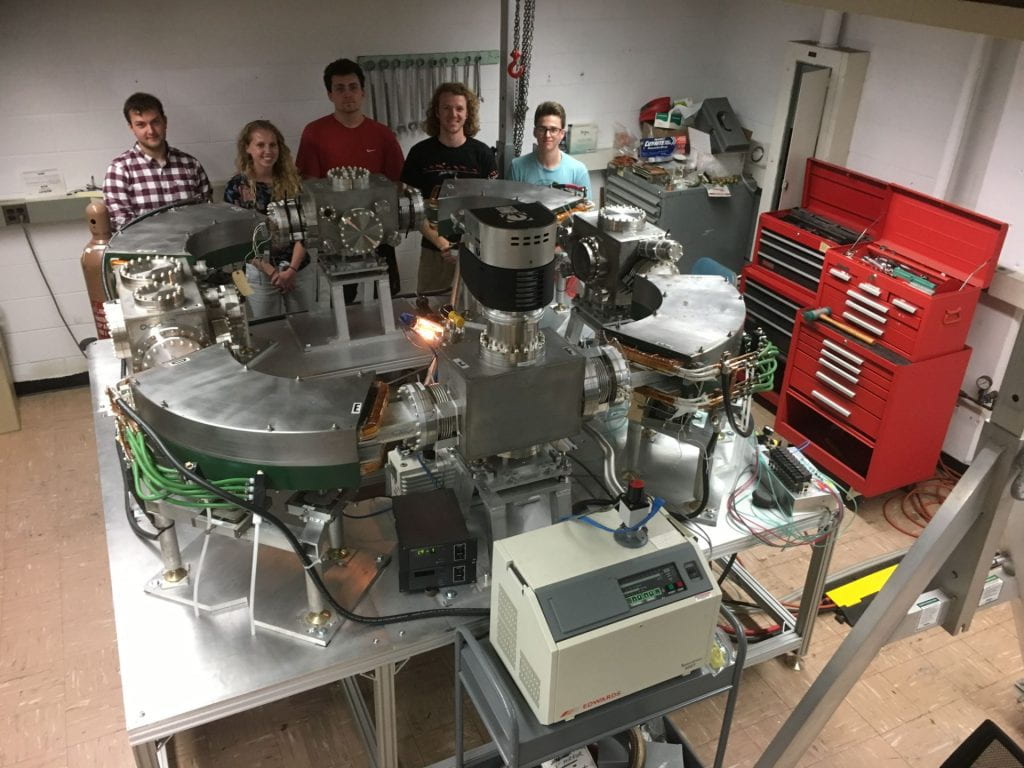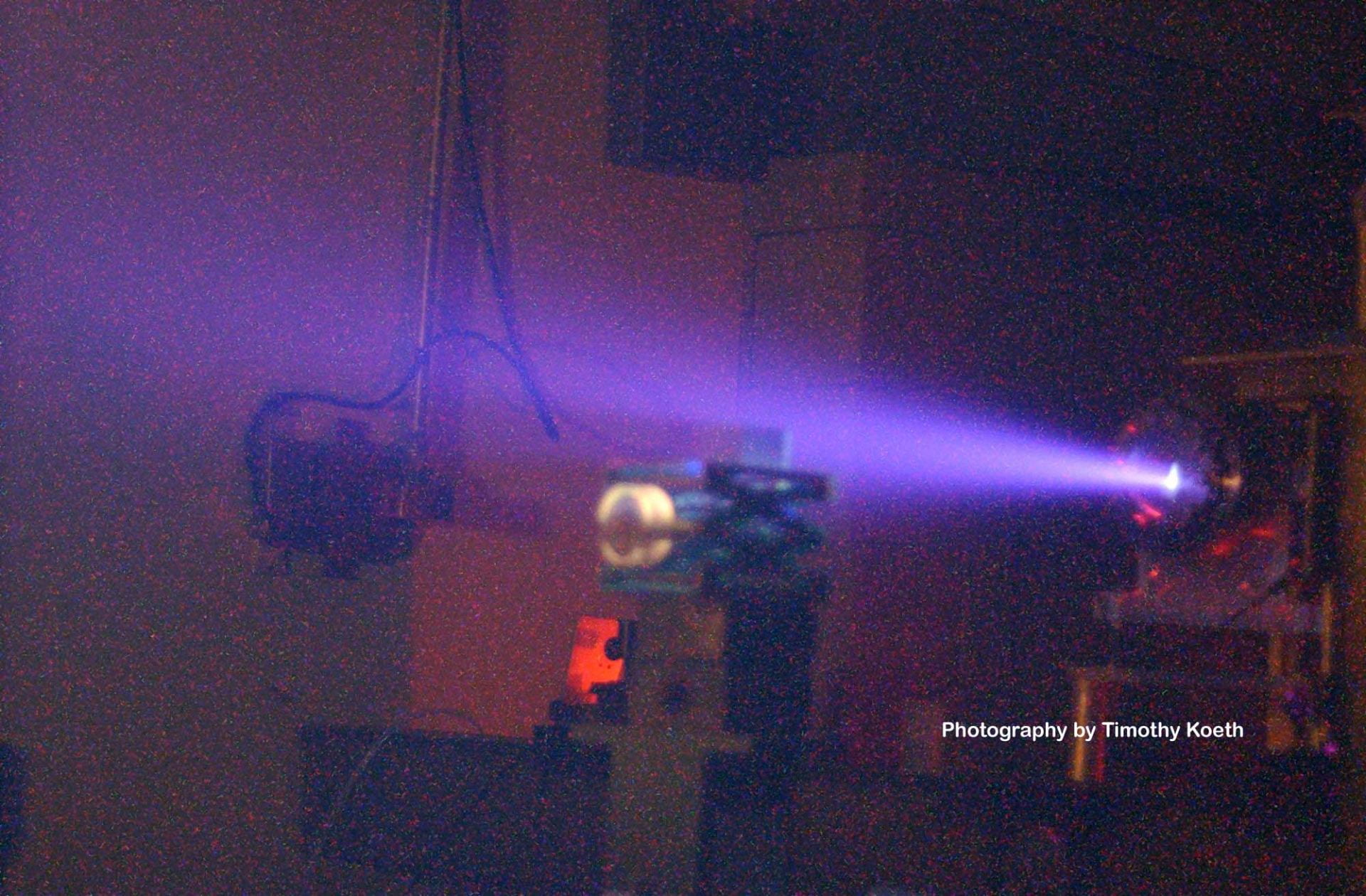The Koeth Group has access to a number of unique and world-class research facilities. These include our cyclotron, Small Isochronous Ring, the CURIE trap under construction, the Low Energy Ion Bombardment Station as well as the 250kW TRIGA Nuclear Reactor, a 10 MeV electron linear accelerator, and the 60Co Panoramic gamma irradiator. Below is more information about some of the equipment in our labs.
The Koeth Research Group (KRG) and associated Radiation Facilities possess or have access to specialized research equipment that will be used in support of our research and educational missions.
University of Maryland Radiation Facilities Instructional Lab: This includes the repertoire of our educational nuclear instrumentation teaching laboratory: numerous Gas-Filled Radiation Detector Lab Stations, portable radiation survey meters, NaI(Tl) PMT based gamma ray spectroscopy systems, two low-background shielded high purity Germanium (HPGe) high resolution gamma ray spectrometers, two portable HPGes, and one portable high resolution Si based x-ray spectrometer. We have a large store of NIM electronics and instrumentation for instruction on amplification, energy and timing resolution, coincidence counting, etc. This instructional lab is also home to student-built systems, including a Peltier cooled cloud chamber, numerous portable Geiger counters, homemade ion chambers and electrometers. In addition to the canonical NIM based electronics, we provide instruction on digital spectroscopic systems (Canberra’s Lynx DSP spectroscopy system). Our high-dose radiochromic film-based dosimetry system is stationed in the lab immediately adjacent to the instructional laboratory along with an electronics workshop.
Reactor and Irradiator Facility: The University of Maryland Radiation Facilities has an assortment of radiation detection systems that are used in research and education. In addition to portable neutron survey meters, neutron detection is accomplished via NIM based counting electronics that support numerous BF3 and He3 detectors, as well as our own prototype B10-excimer excited neutron detection technology [1]. Our instrumentation inventory offers a unique opportunity for neutron counting with five U-235 based fission chambers with one affixed in the reactor core and the other four available for use in bench-top measurement. Alpha, beta, gamma, and neutron sealed sources are available for calibration and testing. The reactor can achieve neutron fluxes as high as approximately 2*1012 n/cm2/s in dry experimental facilities, and a Co-60 panoramic irradiator is available for testing in gamma fields as high several hundred kRad/hr. For both research and education, we identify unknown materials through neutron activation coupled with high resolution gamma ray spectroscopy. Koeth’s group pioneered a re-configurable high resolution ZnS:Gd based neutron imaging system which is now permanently stationed at the thermal neutron column of our reactor; this is also used for both research and education.
Koeth Research Group (KRG): In the Koeth Research Group’s lab, there is a small, student operated, 1-MeV Proton (600keV deuteron) cyclotron which is used for detector development. In both research and educational contexts, we experiment with different scintillator-based detectors for charged particle characterization, including transverse imaging and beam (longitudinal) time-structure.[2] The KRG’s lab has a Jenway 6715 spectrophotometer retrofitted specifically for quantifying optical radiation damage in quartz as a function of high dose. Other laboratory instrumentation includes turbo pump based vacuum systems and UHV testing chambers, typical high-speed electronic test equipment, 2.5GHz Tektronix oscilloscopes, arbitrary waveform generators, RF amplifiers, and a large variety of radioactive sources of for calibration and testing.



